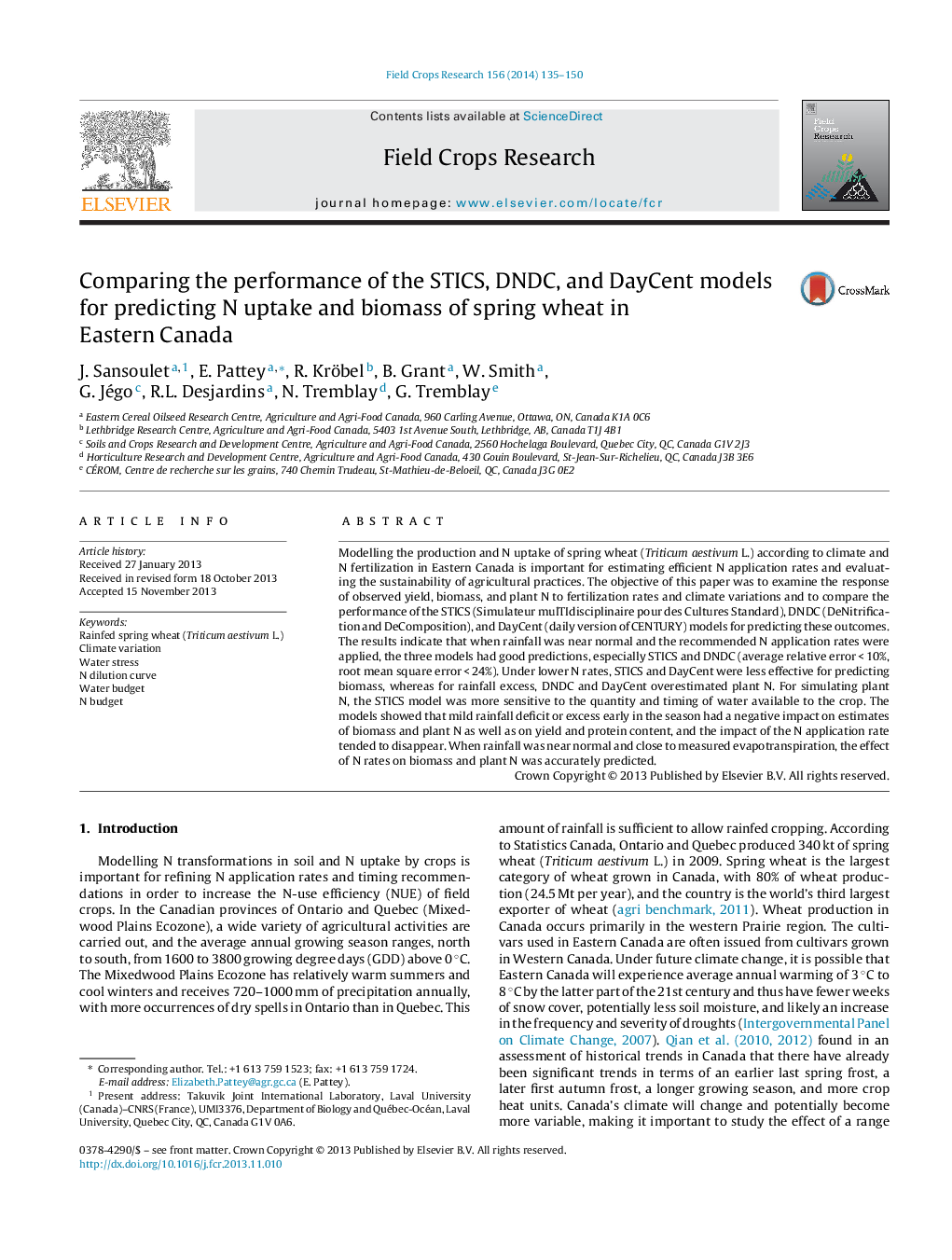| کد مقاله | کد نشریه | سال انتشار | مقاله انگلیسی | نسخه تمام متن |
|---|---|---|---|---|
| 6375118 | 1624707 | 2014 | 16 صفحه PDF | دانلود رایگان |

- Rainfed spring wheat growth was simulated in Eastern Canada using STICS, DNDC and DayCent.
- Mild water stress early in the season had a negative impact on productivity of spring wheat.
- For non-limited rainfall and N rates, the crop model predictions were good.
- Under limited N rates, STICS and DayCent were less effective for predicting biomass.
- For rainfall excess, DNDC and DayCent overestimated plant N.
Modelling the production and N uptake of spring wheat (Triticum aestivum L.) according to climate and N fertilization in Eastern Canada is important for estimating efficient N application rates and evaluating the sustainability of agricultural practices. The objective of this paper was to examine the response of observed yield, biomass, and plant N to fertilization rates and climate variations and to compare the performance of the STICS (Simulateur mulTIdisciplinaire pour des Cultures Standard), DNDC (DeNitrification and DeComposition), and DayCent (daily version of CENTURY) models for predicting these outcomes. The results indicate that when rainfall was near normal and the recommended N application rates were applied, the three models had good predictions, especially STICS and DNDC (average relative error < 10%, root mean square error < 24%). Under lower N rates, STICS and DayCent were less effective for predicting biomass, whereas for rainfall excess, DNDC and DayCent overestimated plant N. For simulating plant N, the STICS model was more sensitive to the quantity and timing of water available to the crop. The models showed that mild rainfall deficit or excess early in the season had a negative impact on estimates of biomass and plant N as well as on yield and protein content, and the impact of the N application rate tended to disappear. When rainfall was near normal and close to measured evapotranspiration, the effect of N rates on biomass and plant N was accurately predicted.
Journal: Field Crops Research - Volume 156, 1 February 2014, Pages 135-150